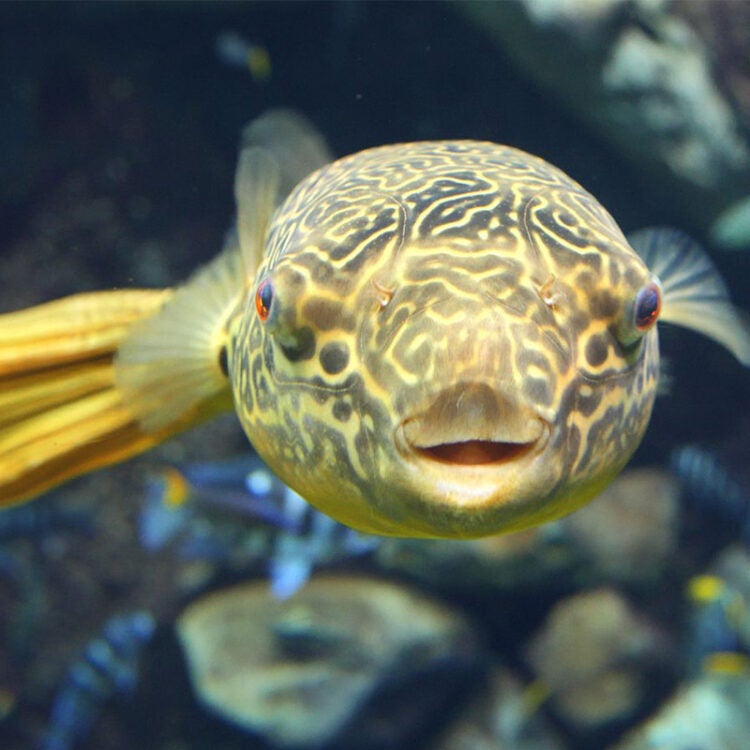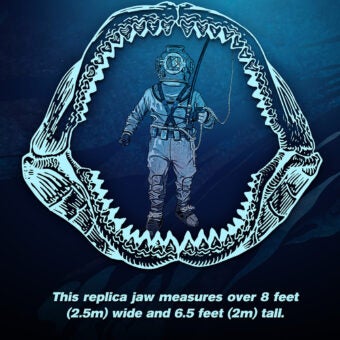-
Size
Maximum length of 30 inches (76 cm) -
Diet
Mollusks, insects, crustaceans and small fish -
Range
Large rivers and lakes in Africa -
Habitat
Shallow water near bottom of rivers and lakes
Physical Characteristics
- Coloration is white to yellow over the back and sides with a pattern of darker brownish-black irregularly shaped rings, spots and stripes. The belly is a lighter shade of yellow to white.
- The body is short, stout, tube-shaped, and covered in a large number of spines with ray-shaped pectoral fins.
- Small mouth with two sets of fused, beak-like teeth, one each on the upper and lower mandibles.
- Maximum length of 30 inches (76 cm).
Animal Fun Fact
The giant puffer is largest species of freshwater puffer fish.
Diet / Feeding
- Diet consists of mollusks, insects, crustaceans and small fish.
- Consuming hard-shelled prey helps prevent tooth overgrowth.
Range / Habitat
- Occurs in large rivers and lakes in Africa, including Lake Tanganyika and the Congo River Basin.
- Typically found swimming and feeding in shallow water or near the sedimentary bottom of rivers and lakes.
Reproduction & Growth
- Oviparous, or egg-laying species.
Conservation Status
- “Least Concern” on the IUCN Red List.
- Populations in eastern Africa occur in a very limited range, making them more susceptible to threats from increased farming.
Additional Information
- Like all pufferfishes, this species may inflate itself with water or air when threatened or stressed.
- The flesh of this puffer is considered a delicacy in Japan. It must be prepared by highly trained chefs since many parts of this fish’s body contain a deadly poison called tetrodotoxin. Many still die consuming this fish.
- One of the few fish known to blink.
- May change coloration based on surroundings.







